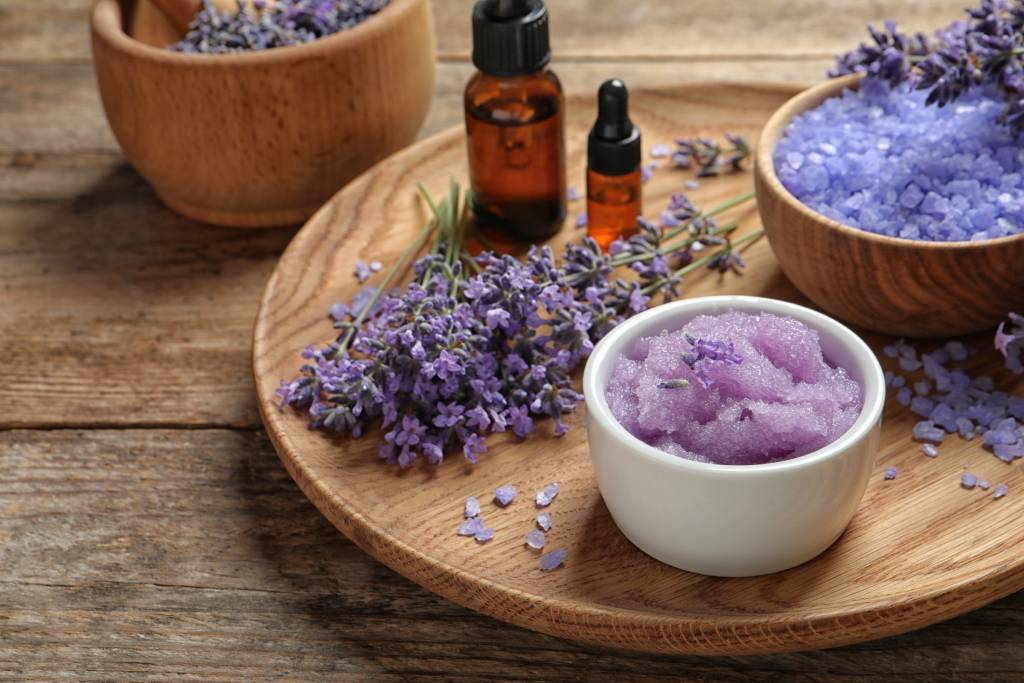
Soothe and heal your perineum fast after giving birth with this easy, natural DIY herbal perineum spray and padsicles recipe. These pads will relieve inflammation, swelling, and soreness after birthing during your first couple weeks postpartum. The remaining spray will provide much relief after you void/use the restroom. It’s a 2-in-1!
Ingredients for healing your precious perineum:
Feminine pads (chemical-free sanitary pads which are chlorine-free and scent-free are healthier for this sensitive postpartum time)
Organic Aloe Vera gel (alcohol-free aloe vera, and watch out for imitation with coloring and dyes)
Organic Witch Hazel (choose an alcohol-free Lavender Witch Hazel or alcohol-free Cucumber Witch Hazel or alcohol-free unscented witch hazel version of this astringent which heals skin and closes pores)
Lavender Essential Oil* (antifungal, antimicrobial, antibacterial, anti-inflammatory; relieves swelling of the skin and supports cellular regeneration)
German Chamomile Essential Oil** (anti-inflammatory; wound-healing)
Rosemary Essential Oil* (anti-inflammatory; strengthens muscles, and fights infection)
Frankincense Essential Oil* (prevents scarring and supports tissue regeneration)
Geranium Essential Oil* (skin conditioner; heals broken capillaries)
Small Spray Bottle
Aluminum Foil (optional)
spoon or small spatula
freezer baggies (gallon-size recommended)
medium-sized air-tight container (optional)
Directions:
- Wash hands well and dry thoroughly.
- Pour witch hazel halfway into your small spray bottle.
- Add 6 drops total of your preferred essential oils. You may want to start with 2 drops of lavender first, spray an area like your wrist, and test your sensitivity. Then add another 2 drops of chamomile, shake it and spray to test your other wrist. Different oils can cause different reactions so you want to make sure you are not sensitive to any particular oil.
- Pour in more witch hazel to the top of your bottle.
- Close and shake vigorously.
- Open aloe vera container.
- Open pads, opening the flaps of the outer wrapper but leave the pad attached.
- Spread a thin layer of aloe onto the pads using a spoon or small spatula.
- Shake the spray bottle again, and spray onto your pads. The pads should be damp but not soaked through; ensure you preserve some of their absorbency for postpartum bleeding.
- Fold up your pads and stack them inside freezer bags. You may be able to fit up to 10 in each bag.
- Stack the bags flat inside your air-tight container.
- Store container in freezer!
- Place peri bottle in the fridge.
- When you go into labor, pop your peri bottle into your birth bag. Shake first and then spray directly onto your perineum after you deliver your beautiful Baby.
- After Baby debuts, soothe your perineum by wearing 3-4 pads daily straight from the freezer! Only take one pad out at a time as needed. You can also spray more onto each individual pad you use if you prefer more moisture.
Note:
* Only use pure, GMO-free essential oils. The best quality essential oils are made by DoTerra. Your perineum is a very precious lady part and these perineum membranes are fragile after giving birth. Your body absorbs anything placed on your skin organ directly into your blood and circulatory system. Choose the best for your best perineum.
** Only use German Chamomile, not Roman Chamomile as this version helps with inflammation.
Consider hiring a Postpartum Doula for more support after giving birth.
If you don’t feel up to making your own, check out our:


